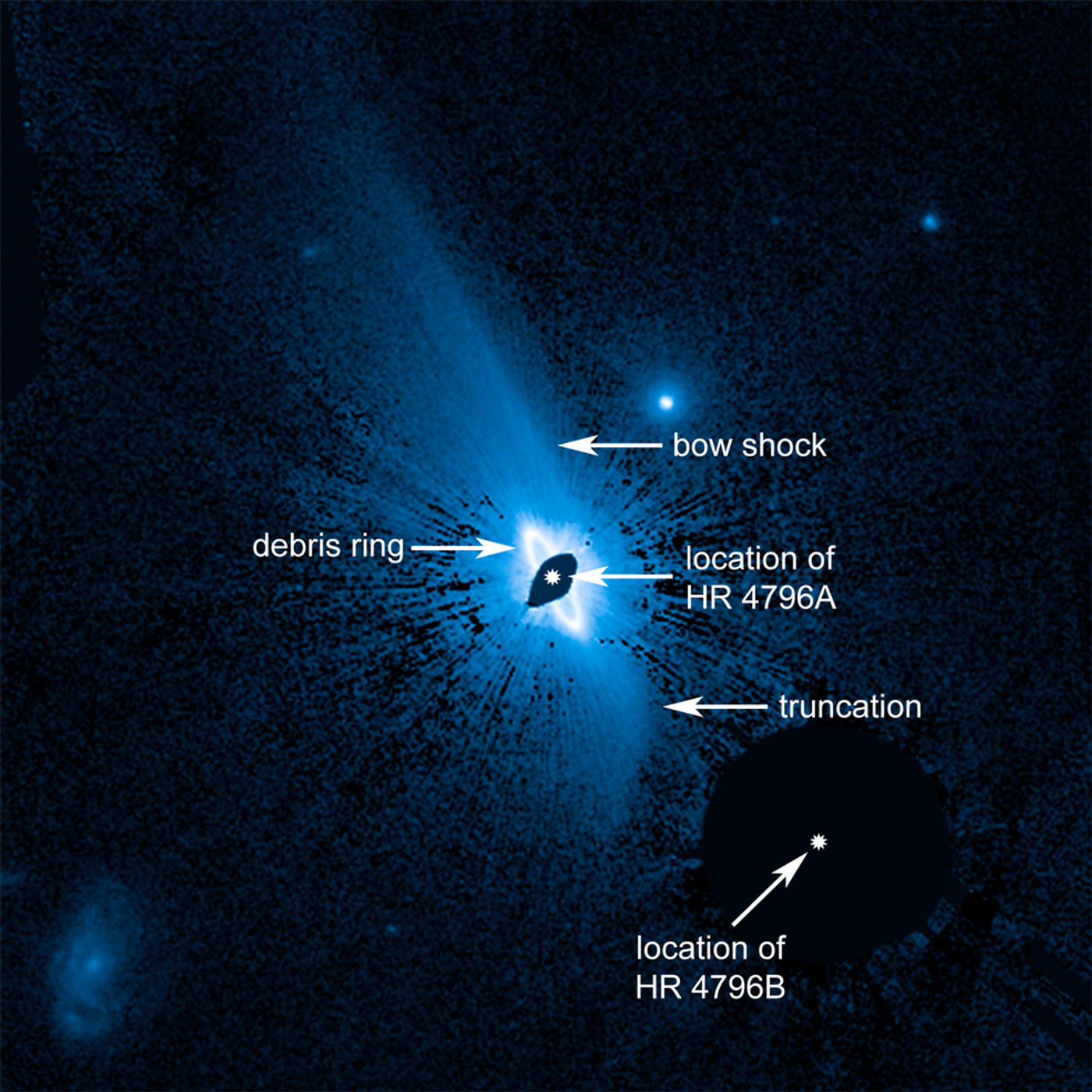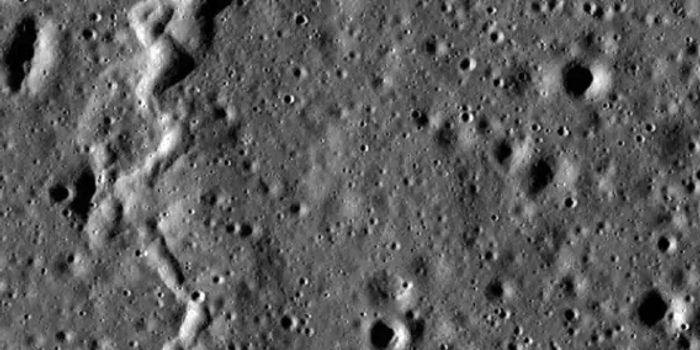Astronomers Spot Massive Dust Structure Encircling HR 4796A with Hubble
NASA’s Hubble Space Telescope is getting old, but astronomers continue using it to make breakthrough discoveries about the universe around us. One of the most recent involves a young binary star system called HR 4796, which resides around 237 light years away from Earth. The findings have been published in The Astronomical Journal.
While astronomers were studying the system with Hubble, they took note of a 150 billion-mile-wide dust structure encircling HR 4796A. More excitingly, images captured during observation show the companion star, HR 4796B, disrupting the dust’s natural flow as it orbits HR 4796A.
Image Credit: NASA/ESA/G. Schneider (University of Arizona)
So where did all this dust come from? That's a good question, and experts think that they may have an answer.
Evident right off the bat from the Hubble images is an inner ring of dust that indicates planetary formation. If rocky planets are actively forming around HR 4796A, then collisions between said planets may have created the excess dust we see in the Hubble images. Furthermore, outward forces generated by the star likely pushed the dust far away.
But if that wasn’t interesting enough, astronomers are also pointing out another peculiarity from their observations: the unexpected truncation occurring between HR 4796A and the companion star HR 4796B.
This dip looks like a bite being taken out of a donut, and experts aren’t entirely sure what’s causing it. It may have something to do with how HR 4706A moves, but it’s equally likely that a gravitational influence from HR 4796B could be the culprit.
"The dust distribution is a telltale sign of how dynamically interactive the inner system containing the ring is," explained study lead author Glenn Schneider from the University of Arizona. "We cannot treat exoplanetary debris systems as simply being in isolation."
Related: Cluster of monster-sized stars discovered by Hubble
"Environmental effects, such as interactions with the interstellar medium and forces due to stellar companions, may have long-term implications for the evolution of such systems," he continued.
Related: This binary star system has three misaligned planet-forming disks
"The gross asymmetries of the outer dust field are telling us there are a lot of forces in play (beyond just host-star radiation pressure) that are moving the material around. We've seen effects like this in a few other systems, but here's a case where we see a bunch of things going on at once."
As it would seem, there’s still a lot of confusion concerning what might be going on here. Astronomers will undoubtedly continue studying the binary system, and others, with the hope of learning more about the forces at work.
Source: NASA









